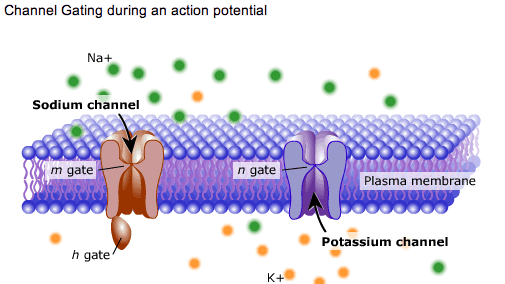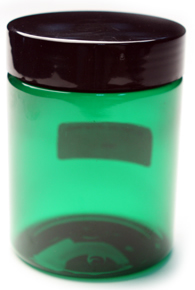Return
to Biology 1114 Index Page

Preview
Material for Exam 2 - Spring 2010
Print
the PDF version (no pictures, better printing)
Remember:
Use a #2 pencil to fill in the information on your NCS answer sheet. Put your O-Key Account Username in the boxes indicated for LAST NAME and darken the appropriate circles. Write your Name (Last, First) and “Star” or “NoStar” in the space above the boxes containing your O-Key Account Username. Darken the (S) in the last column of the name circles. Enter the number 1012 and darken the corresponding circles in the first 3 columns of the “Student ID.” Failure to perform this correctly will incur a -10pt handling fee. Read all questions and answers carefully before choosing the single BEST response for each question. Feel free to ask the instructor for clarification.
Dr. Ranvier studies how the nervous system works. In his laboratory, he can measure whether Na+ channels are capable of opening and shutting and whether the Na+/K+ pumps are operating in the axon of a nerve. The following table describes data he collected for several different nerves, some of which he suspected did not function properly.

Click picture for animation
source
|
Na+ channel |
Na+/K+ pump |
Nerve 1 |
Constantly open |
Operating |
Nerve 2 |
Constantly closed |
Operating |
Nerve 3 |
Able to open and close |
Operating |
Nerve 4 |
Able to open and close |
Not Operating |
A population of slugs, which are gray in color, live in a rocky area that is mostly gray colored. The coloration provides camouflage. During a storm, flood water washed many of them away. A few of the gray slugs are washed to an area that is covered with brown rocks and their gray camouflage was no longer as effective. It is known that mutations in the slugs can change their color.
The paper on which you are reading this question is made of fibers of cellulose, a polymer of glucose (C6H12O6) that was derived from the wood pulp of forested trees.
People who live in the villages near Lake Maracaibo have the highest percentage of individuals with Huntington’s Disease than any other population on Earth. Huntington’s Disease disrupts the function of neurons and eventually leads to death. In some villages more than half of the individuals are born with the disease. For most individuals, the disease is not detectable until the mid-20’s. All known cases have traced their ancestry to a few individuals that migrated to the area 300 years ago. Before this migration there were no known cases of the disease.
A student interested in entomology (the study of insects) built a green-glass terrarium (it only allowed green light in) and placed leafy green plants inside. Within several days, the plants appeared stunted, lacking new growth.
One of most feared venomous spiders is the black widow. Most illustrations portray the female who bears a red hourglass-shaped marking on her spherical black abdomen. Black widows commonly inhabit dimly lit areas. More than 13,000 bites are reported annually in the U.S. The black widow’s venom, known as latrotoxin, is injected through its fangs. Symptoms of latrotoxin poisoning include rashes, elevated blood pressure, respiratory problems and nausea.The table below illustrates the response by guinea pigs to the injection of latrotoxin plus 4 different neurotoxins (each injected separately into a different guinea pig with latrotoxin) compared to the injection of each toxin individually into separate guinea pigs.
A 20-acre field of mature belladonna plants in Sicily was subject to gale force winds in late autumn, randomly dispersing seeds downwind. The following spring, botanists sampled belladonna plants from one-acre plots east, northeast and southeast of the original field—none of which had grazing animals. The botanists noted that the plants in the northeastern plot average a higher amount of atropine per plant that from the other locations. The botanists continued to observe the belladonna plants for a few years after sheep and goats were added to the fields and noted that, compared to the other 2 plots, fewer plants from the northeastern plot were consumed by local sheep and goats.
A limnologist (a scientist who studies lakes) is interested in the rate of growth of algae, single celled organisms that are able to perform photosynthesis, under different conditions. He put the same mass of algae in water tanks to which different amounts of fertilizer were added. Then he determined growth by measuring the mass of algae after 3 days. Based on his hypothesis, he predicted that fertilizer will make algae grow faster. The results are shown in the following table.
|
No fertilizer added |
Low amount of fertilizer added |
High amount of fertilizer added |
Mass of algae per liter of water, g |
0.5 |
2.0 |
3.2 |
Neurotoxin: |
saxitoxin |
botulin |
physostigmine |
atropine |
Effect alone: |
paralysis |
paralysis |
seizures, spasms |
paralysis |
Effect when combined with latrotoxin: |
less paralysis |
less paralysis |
more spasms |
less paralysis |










